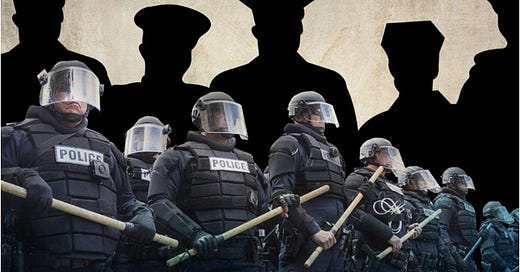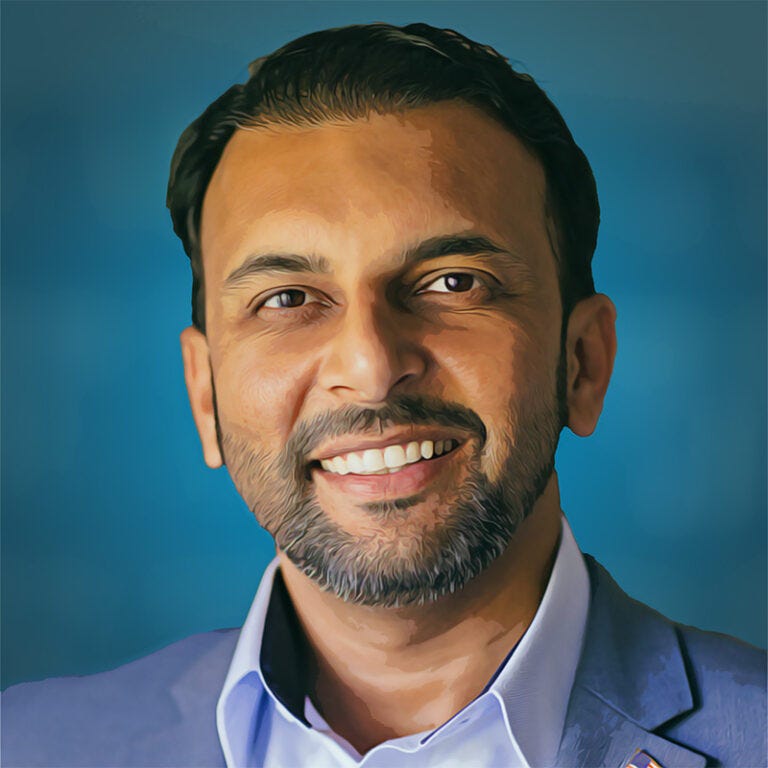How Many People Realize Police Have No Legal Duty to Protect Us?
This isn't clickbait, it's established Supreme Court precedent, and we need to talk about it if we're serious about public safety
What if I told you that the Supreme Court has repeatedly ruled that law enforcement has no legal duty or obligation to protect the American people from harm or even death? Let’s Address This.
In 1989 SCOTUS ruled in Deshaney v. Winnebago County Department of Social Services, that 4-year-old Joshua DeShaney could not sue child welfare officials for failing to intervene to protect him from a beating so severe he suffered brain injury that left him institutionalized. Why? The Supreme Court concluded:
Nothing in the language of the due process clause itself requires the state to protect the life, liberty and property of its citizens against invasion by private actors.
Some 16 years later in 2005 the Supreme Court reaffirmed in Castle Rock v. Gonzales that police have “no legal duty to protect the public.” In that case case, a woman filed a restraining order against her estranged husband to protect herself and her three daughters. Her estranged husband violated the restraining order and kidnapped her daughters. Gonzales went to law enforcement to ask them enforce the restraining order and bring her daughters back. Police refused. In the meantime, her estranged husband killed all three of her daughters and was himself killed when he later attacked the police department. Gonzales sued, alleging her daughters were killed because police failed to enforce the restraining order as they were required to do. Again, the Supreme Court ruled, quite cruelly:
[Gonzales] has no constitutionally-protected property interest in the enforcement of the restraining order, and therefore could not claim that the police had violated her right to due process.
A Federal judge reaffirmed this ruling in 2018 when Parkland students sued the police officer who ran away from the shooting, holding that the officer had no duty to protect the Parkland students suffering a deadly mass shooting. To be clear, this was the police officer hired specifically to protect students from harm and mass shootings.
In short, the U.S. Supreme Court argues, perhaps better than any entity in existence, that public safety does not increase with more police funding, in part because police have no obligation to protect the public from harm and death. And while likely unintended in their cruel decision making, the Supreme Court’s draconian rulings force us to recognize that we must stop seeing public safety as a Police matter—and instead see it from the lens of societal needs. A lens that accounts for (but is not limited to) things like addressing poverty, addiction, mental health access, suicide prevention, homelessness, and other similar social services—all things police officers are not trained to do but asked to do anyway.
As I’ve said before, law enforcement responds to crime, but a living wage, food and water security, accessible healthcare, affordable housing, addiction treatment, and public education prevent crime. So if we want safer communities, then it is critical we invest in building up people, not meting out punishments.
And the data backs this up. A recent study of more than 4.3 million 911 calls showed “only 6.4% of 911 calls were for violent matters.” As TIME reports:
But according to this study, mental health incidents only made up 1.3% of all the calls examined, and only 4% of those calls resulted in an officer being dispatched (though the survey did not track the actions of 911 dispatchers specifically). The largest percent of the calls were traffic-related at 16.8%. followed by “disorder” at 16.2% and “suspicion” calls—from individuals worried that a crime might happen or has happened—at 12.8%. Calls for violent incidents specifically were at 6.4%.
Imagine, only 6.4% were for violent incidents, meaning the other 94% were for non-violent matters! We must therefore ask ourselves: If public health and safety is our top priority—do our current budgets reflect this reality? I would argue emphatically, no.
Take Uvalde, for example, the site of one of the worst atrocities ever committed in modern American history. Robb Elementary had 576 students—and 84% were economically disadvantaged. We painfully recall how 19 students were murdered, 17 more suffered bullet wounds, and 538 are emotionally scarred the rest of their lives. Yet, the school had just one counselor to tend to the mental and social health needs of those children. One. Meanwhile, Uvalde Police consumed 40% of the town budget—and they still had no obligation to protect students from being murdered. This is, in short, a failed system.
Then, people cite mental health issues as a reason for violence—but the facts show that people with mental health issues are not some major or even minor source of community violence, and are most likely to suffer violence as a result of their mental illness, than perpetuate violence. As the Frontiers in Psychiatry Journal reports:
People with a mental health disorder have a significantly higher risk of becoming victims of violence compared to the general population. Previous research has focused largely on violent crimes such as physical assault, aggravated acquisitive crimes, violent threats, and sexual offenses in this population. Fewer studies have observed rates of victimization of non-violent crimes such as theft, robberies, or threats in this population for which the elevated risk compared to the general population persists.
And once again, the data backs this up, for example, as it relates to police violence. From 2015 to 2021 police killed more than 1400 people with mental illness. This is one consequences of asking law enforcement to address matters they have zero training or ability to address. What sense does it make to send an armed agent of the state to address someone suffering a healthcare crisis?
But, despite these dire circumstances, proven models exist to turn the tide. I’ve written previously on the need to end qualified immunity and pass the George Floyd Justice in Policing Act—but beyond that—we must also allocate meaningful resources to effectively meet societal needs. And we have proven models that demonstrate what this could, or maybe should, look like.
For example, in 2020 Denver deployed a pilot non-lethal mental health team to respond to mental health 911 calls and other non-violent 911 calls, all as a means to meet societal needs better than responding with an armed and untrained law enforcement officer. As reported:
Previously, Denver 911 operators only directed calls to police or fire department first responders. But the Support Team Assistance Response (STAR) pilot program created a third track for directing emergency calls to a two-person team: a medic and a clinician, staffed in a van from 10 a.m. to 6 p.m. on weekdays.
After an astounding 748 deployments, the STAR pilot program reported zero violent incidents, zero needs to call the police, and zero need to arrest anyone in need. This meant that civilians received the critical 911 support they needed through trained professionals, that law enforcement was more available for the 6.4% violent 911 calls, and that Denver’s budget better reflected the societal need to advance public safety. A true win-win for all parties involved.
Meanwhile, in our current policing strategy, police kill more than 1100 civilians a year (leading the developed world). The USA likewise leads the world in incarceration rates, we suffer the highest recidivism rates at nearly 70%, and more than 60% of people in jail need mental health treatment. This is not public safety. But cities like Denver prove a community model works.
Therefore, we must expand upon Denver’s model. Because in our current reality—where police have no duty to protect dozens of murdered school children from terrorism in Parkland or Uvalde, then escape liability due to the absurd doctrine of Qualified Immunity, is not just. The current model of people suffering from social ills like addiction, mental illness, and poverty getting jailed or killed—not treated—is not sustainable and will only lead to more violence.
Finally, and significantly, this model also makes the lives of police officers safer and better. The “Blue Lives Matter” folks should be 100% behind this because a public safety model that ensures police aren’t asked to do things they aren’t trained to do means the lives of police officers are safer as well.
We cannot rely on the Supreme Court to save us, unfortunately. But fortunately, we know a better and proven public safety model exists and works. One that recognizes true public safety as allocating resources through the lens of societal need, not through the lens of more law enforcement and harsher punishments. We simply need to political will and mass movement of citizens pushing them to ensure it happens.






Excellent and provocative. If police are not required to protect and serve, why do they exist?
Multnomah County (which includes Portland, Oregon) had a social work team working with sheriffs that covered unincorporated areas back in the 1970s that was highly effective.